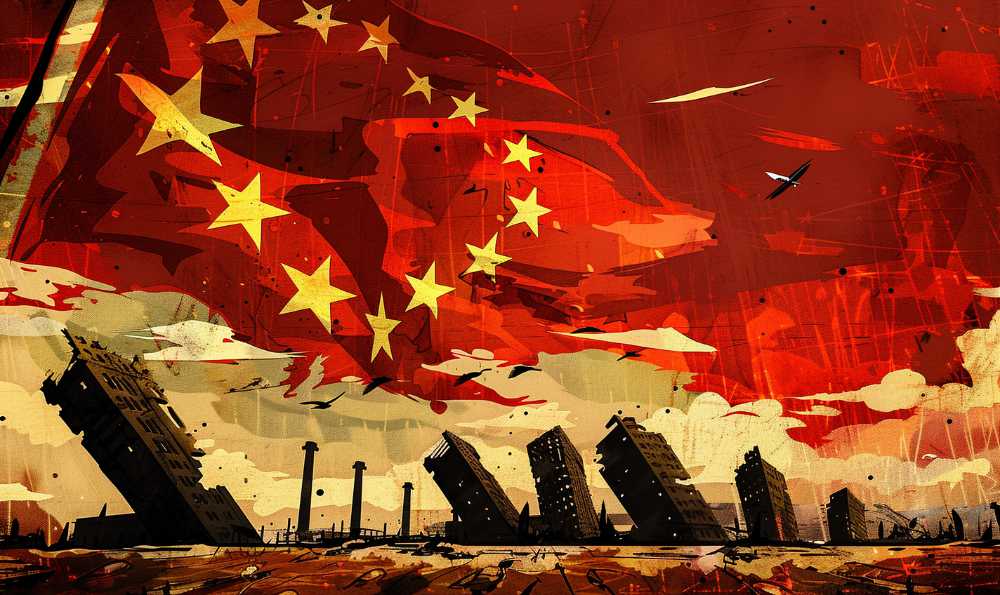The Hollow Rhetoric of ‘The Left’: Filler Words As a Sign of Impotence.

In political discourse, terms like “far-right,” “alt-right,” “reactionary,” and “Islamophobic” are thrown around liberally by left-leaning politicians, activists, and media figures. What once served to identify specific political ideologies or extremist positions has morphed into a collection of empty buzzwords used primarily to discredit opponents without engaging in substantive debate. This rhetorical strategy reveals not only a lack of solid arguments but also a deeper sense of insecurity and panic about shifting political realities. This article explores how these terms are used, the effect they have on public debate, and the political strategy behind their deployment.
The inflation of the term “far-right”
From specific definition to political weapon
The term “far-right” originally referred to radical, authoritarian, and often anti-democratic movements, such as neo-fascists and violent nationalist groups (Political Extremism in Europe, Mudde). However, over time, the definition has been stretched to include any position that challenges the progressive consensus. Conservative views on immigration, criticism of environmental policies, or defense of national sovereignty are now routinely labeled as “far-right,” regardless of the substance or tone of the argument (The Rise of the Radical Right in Europe, Eatwell).
According to political scientist Cas Mudde, the expanding definition of “far-right” reflects a deliberate political strategy to frame conservative and nationalist views as extremist, thereby reducing their legitimacy in public debate (The Far Right Today, Mudde).
A tool to shut down debate
Labeling political opponents as “far-right” effectively ends the conversation. Once someone is framed as an extremist, they are placed outside the realm of reasonable and democratic discourse. This makes meaningful political engagement nearly impossible and positions the user of the label as morally superior (How Political Rhetoric Shapes Perception, Lakoff).
The rise of new terms: “alt-right” and “reactionary”
Expanding the enemy list
As the term “far-right” began to lose its impact due to overuse, new labels emerged, including “alt-right” and “reactionary.” These terms imply that anyone deviating from the dominant progressive narrative is, to some extent, extreme or radical. This allows left-leaning voices to maintain a narrow ideological framework where only their positions are considered legitimate (The Alt-Right: What Everyone Needs to Know, Hawley).
The label “alt-right” was popularized by media coverage of figures like Richard Spencer, but it quickly expanded to include a wide range of conservative and nationalist positions (Making Sense of the Alt-Right, Hawley). The political scientist George Hawley notes that this strategic labeling allows the left to consolidate ideological power while silencing dissent.
The failure of the “reactionary” frame
“Reactionary” is a vague and politically loaded term. It suggests backwardness and an irrational rejection of progress without defining what is being rejected or why. Its primary function is to evoke negative connotations rather than to engage with the actual arguments being presented (Reactionary Politics and the Rise of Populism, Goodwin).
The moral panic behind “Islamophobia”
Criticism of Islam as a political taboo
Another widely used political label is “Islamophobic.” Any criticism of Islam or its political and social dimensions—such as the status of women, freedom of speech, or the separation of religion and state—is quickly branded as Islamophobia. This tactic delegitimizes criticism and places the critic in the category of bigotry and hatred (Islamophobia and its Consequences, Meer).
Sociologist Tariq Modood argues that the term “Islamophobia” has been weaponized to silence criticism of Islam’s political and social impact, even when such criticism is grounded in democratic values (Multiculturalism and Muslims in Britain, Modood).
Fear of open debate
The term “Islamophobic” reflects a broader fear of engaging in an honest debate about religion and culture. By immediately framing criticism as hate speech, the left avoids difficult conversations and maintains the status quo (Fear of Criticism: Islamophobia and Political Correctness, Malik).
The emergence of “conspiracy theorist” and “denier”
The modern-day heretic
In recent years, new terms like “conspiracy theorist” and “denier” have become common tools for discrediting dissent. Those questioning mainstream narratives on issues like COVID-19, climate change, or election integrity are routinely dismissed as dangerous or irrational (Conspiracy Theories and Democratic Discourse, Sunstein).
During the COVID-19 pandemic, critics of government lockdowns or vaccine mandates were frequently labeled as “conspiracy theorists” or “anti-science,” even when their concerns were based on legitimate scientific or legal arguments (The War on Dissent, Davis). The British Medical Journal published an article acknowledging that early concerns about vaccine safety were often unfairly dismissed (Covid-19: Political Rhetoric and the Suppression of Debate, Abbasi).
Shutting down dissent through labeling
By branding someone a conspiracy theorist, the left effectively removes them from serious consideration. The term suggests paranoia and detachment from reality, which allows progressive voices to sidestep addressing the underlying issues being raised.
Environmental activists and politicians often label critics of renewable energy policies as “climate deniers,” even when those critics present economic or logistical concerns rather than rejecting climate science itself (Climate Change and Political Polarization, Dunlap).
The political strategy behind these labels
Manufacturing moral superiority
The strength of terms like “far-right,” “alt-right,” and “Islamophobic” lies in their ability to create a clear moral divide. By portraying opponents as dangerous, hateful, or irrational, left-wing figures position themselves as defenders of justice and reason (The Righteous Mind, Haidt).
Haidt argues that this strategy of moral positioning allows the left to consolidate power by marginalizing alternative viewpoints rather than engaging them directly.
Avoiding ideological debate
When political discourse is reduced to a battle between “good” and “evil,” there is little room for meaningful discussion about policy, evidence, or outcomes. Labels replace arguments, making it easier to delegitimize criticism than to engage with it (Political Correctness and the Death of Debate, Lukianoff).
In the climate debate, those questioning the cost or feasibility of green policies are routinely dismissed as “climate deniers,” regardless of whether their arguments are based on scientific evidence or economic analysis (Merchants of Doubt, Oreskes & Conway).
Conclusion: the collapse of leftist rhetoric
The overuse of terms like “far-right,” “alt-right,” “reactionary,” and “Islamophobic” reflects a deeper failure of political argumentation. These buzzwords serve primarily as tools of moral positioning and strategic framing, not as meaningful descriptors of political reality. As these terms become increasingly detached from their original definitions, they lose their rhetorical power—revealing a leftist movement more concerned with maintaining ideological purity than with engaging in honest political debate. The question is whether the left will return to substance and argument, or whether the reliance on empty labels will continue to undermine meaningful discourse.


















